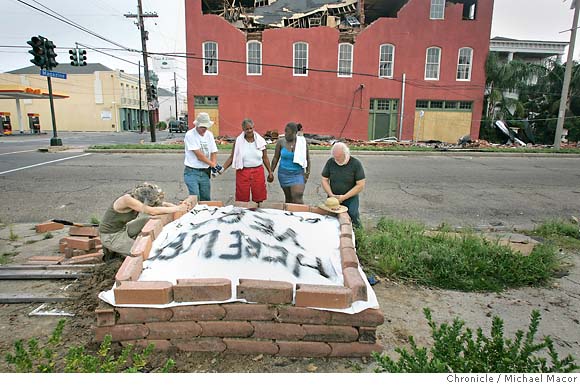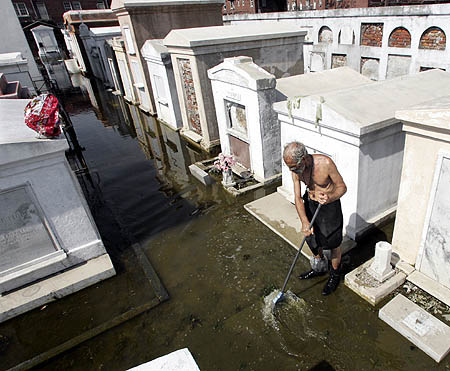 |
 |
 |
 |
 |
 |
Cultural
Upkeep During Rebuilding
Written
by Polina
Bakhteiarov
Clean up,
Reopening, and
Beautification
At the present time, the federal government must appoint a task force team to complete the removal of debris in New Orleans, as well as in all of the towns of the surrounding parishes where this process has not yet been completed. One of the most horrific outcomes of Hurricane Katrina’s wrath was the humanitarian crisis that resulted from the innumerable people who drowned in the flood waters and whose bodies and/or remains are still scattered about the city today. The reason for the delay in this removal of corpses is the fact that the New Orleans Fire Department has never been supplied with the biohazard suits necessary for work with such unsafe materials (J. Schwartz, personal communication, October 6, 2006). Thus, it is of primary importance to the local government to provide the firefighters with the proper equipment in order that the deceased can be properly laid to rest.
However, the aforementioned efforts cannot
be singular and
must be alloyed with the clean up of funeral homes throughout New
Orleans.
After the storm, many of these facilities were abandoned and any
returning
families that had lost their loved ones due to Katrina had to employ
the services
of open morgues in Jefferson Parish. This was very costly and depleted
many
families’ savings, thus preventing them from holding traditional jazz
funerals
for their deceased relatives. In the worst case situations, families
and
friends had to resort to designing makeshift graves in the street, such
as the
one below.

http://www.sfgate.com/cgi-bin/object/article?f=/c/a/
2005/09/04/MNG16EIE0K1.DTL&o=0
Thus, it is essential that all funeral homes in New Orleans be gutted and restored, while, from this point forward, any returning families who need to bury the loved ones who they lost during Hurricane Katrina will be fully compensated for the costs of caskets, morgue use, and all services pertaining to the actual burial. It is our hope that this will allow some of the families to put their money towards traditional funeral processions and, on a grander scale, bring a more concrete sense of closure to the mourners.
Nonetheless, there is no point in reopening
the funeral
homes if there is no place to bury the deceased. One of the most unique
traditions of New Orleans – the burial of the dead in large,
aboveground tombs
- suffered the most during Hurricane Katrina, as most cemeteries were
flooded.
Without any direct clean up help from the government, individuals, such
as the
Voodoo priest in the photograph below, took up the initiative to begin
maintenance and repair of these remarkable burial grounds.

http://www.post-gazette.com/pg/05250/566866.stm
Although similar grassroots endeavors have been carried out throughout New Orleans, the government must initiate a city-wide program to complete the clean up of these sacred, as well as historically and culturally important sites; such an advance would both provide residents with peace of mind and display the government’s commitment to the beautification of the city.
Revitalizing
and Remembering
As New Orleans continues to rebuild, critical cultural considerations must not be ignored. With regards to the city’s famous neighborhood festivals, many, including Mardi Gras, the New Orleans Jazz and Heritage Festival, and the Ponchatoula Strawberry Festival, were back in full effect last year and will return once again in April. It is our hope that the city government, through media such as radio, television, and billboard advertisements, will encourage residents to continue with the long-standing family traditions of making banners, constructing floats, and marching in the numerous neighborhood parades of the spring festival season.
Finally, a memorial in honor of the victims of Hurricane Katrina must be built within the city. However, since such a high number of neighborhoods experienced extensive damage, choosing a singular district for the monument would show bias and may incite civil irritation. Therefore, the local government will invest in multiple memorials throughout the city that will honor the memory of the people from the specific neighborhood who lost their lives in the storm, while also exhibiting immense gratitude to those who dedicated their time and labor to rebuilding the particular district.







